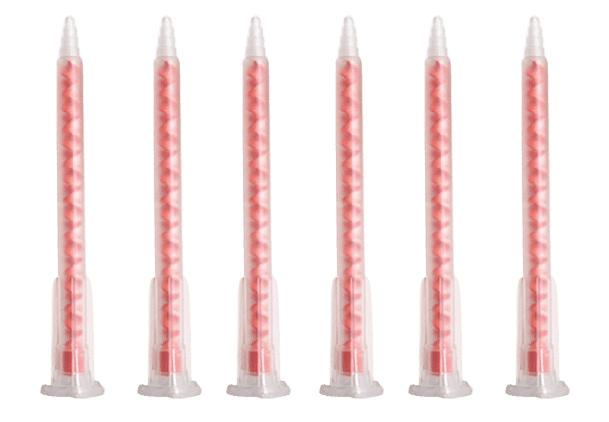Epoxy resins are widely used in various industries for their adhesive and structural properties. When working with epoxy, having the right equipment is crucial, and one essential component is the mixing nozzle. These nozzles allow for the precise mixing and dispensing of epoxy, but they can be prone to cracking if not handled and maintained correctly. In this blog post, we’ll explore why epoxy mixing nozzles can crack and provide tips on how to prevent it.

1. Choose Quality Mixing Nozzles
The quality of your mixing nozzles matters. Low-quality or generic nozzles may not withstand the chemical properties and pressure of epoxy resin. Invest in high-quality mixing nozzles designed specifically for epoxy applications. These nozzles are often made from materials that can handle the demands of epoxy without cracking or degrading.
2. Control Temperature
Epoxy resins generate heat as they cure. Excessive heat can weaken the nozzle material, making it more prone to cracking. Maintain a suitable working temperature for both the epoxy resin and the nozzles. This will help ensure that the curing process proceeds smoothly without damaging the nozzles.
3. Follow Curing Time Guidelines
Every epoxy resin comes with specified curing times. If the epoxy resin cures too quickly within the mixing nozzle, it can generate excess heat, leading to nozzle damage. Always follow the manufacturer’s instructions for mixing and curing times to prevent premature curing within the nozzle.
4. Regulate Dispensing Pressure
The pressure at which epoxy resin is dispensed through the nozzle is a critical factor. Excessive pressure or pressure spikes during application can cause cracks in the nozzle. Use a pressure regulator to maintain a consistent and appropriate dispensing pressure throughout your epoxy application.
5. Ensure Chemical Compatibility
Different epoxy resins have varying chemical properties. Some may be more chemically aggressive than others, leading to reactions with the nozzle material over time. Ensure that the mixing nozzle material is compatible with the specific epoxy resin you are using to prevent chemical damage and cracking.
6. Minimize Nozzle Reuse
While it’s tempting to reuse mixing nozzles to save costs, it’s generally best to use them once and then discard them. Reusing nozzles multiple times can lead to wear and tear, making them more susceptible to cracking. If you must reuse nozzles, inspect them carefully for any signs of damage or wear before each use.
7. Handle Nozzles with Care
Mishandling mixing nozzles, such as dropping or squeezing them too tightly, can lead to damage. Be gentle when attaching, removing, and using the nozzles to avoid unnecessary stress.
8. Choose the Right Nozzle Size
Using a nozzle with the incorrect size or flow rate for your epoxy application can put excessive strain on the nozzle, leading to cracking. Ensure that the nozzle you select is appropriate for the specific epoxy dispensing task at hand.
9. Proper Cleaning and Maintenance
Cleaning mixing nozzles thoroughly after each use is essential to prevent residue buildup, which can interfere with subsequent applications and potentially cause cracking. Follow the manufacturer’s guidelines for proper nozzle maintenance.
10. Store Properly
Store epoxy and mixing nozzles in a cool, dry place away from direct sunlight and extreme temperature fluctuations. Exposure to adverse storage conditions can affect the integrity of both the epoxy and the nozzles.
Conclusion
By addressing these potential causes and following these tips, you can extend the lifespan of your epoxy mixing nozzles and reduce the likelihood of cracking during your epoxy applications. Proper equipment care and maintenance are essential for achieving successful epoxy projects.
